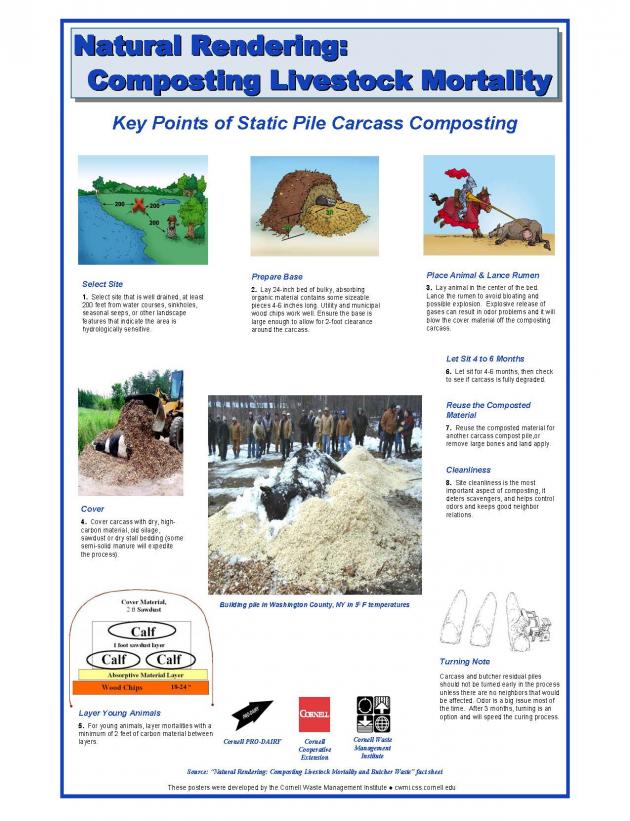Managing horse manure may involve mechanical equipment, physical labor and conveying of manure. It is generally practiced outdoors in all types of weather. Composting is the aerobic decomposition of organic materials by microorganisms under controlled conditions. Microorganisms consume oxygen while feeding on organic matter and as a result, give off heat and CO2. In conventional composting, composters manage the process variables, feedstock, air, moisture and shelter, to optimize the natural decay process. Green, wet, nitrogenous feedstocks are mixed with brown, dry, carbonaceous material creating a carbon to nitrogen (C:N) ratio in the range of 20 to 30:1 along with the proper amount of moisture.
Horse manure happens to be one of the easiest manures to compost. There are several methods in and out of structures that can facilitate the compost process. The process can be simple properly shaped static piles, aerated and turned; and you can even compost to capture and use the heat or energy. Imagine capturing the heat from your manure to warm barns! The windrows or piles are then managed via monitoring and/or turning for proper air-flow and temperature in order to speed up decomposition, eliminate odors and destroy pathogens and weed seeds. Composting horse manure can be as simple or complicated as you choose. It can be used on site or exported for sale.
Authors
Bonhotal, Jean jb29@cornell.edu Cornell Waste Management Institute
Additional Information
- Managing Manure on Horse Farms
- Small Farm Environmental Stewardship
- Composting Livestock or Poultry Manure
The authors are solely responsible for the content of these proceedings. The technical information does not necessarily reflect the official position of the sponsoring agencies or institutions represented by planning committee members, and inclusion and distribution herein does not constitute an endorsement of views expressed by the same. Printed materials included herein are not refereed publications. Citations should appear as follows. EXAMPLE: Authors. 2015. Title of presentation. Waste to Worth: Spreading Science and Solutions. Seattle, WA. March 31-April 3, 2015. URL of this page. Accessed on: today’s date.


